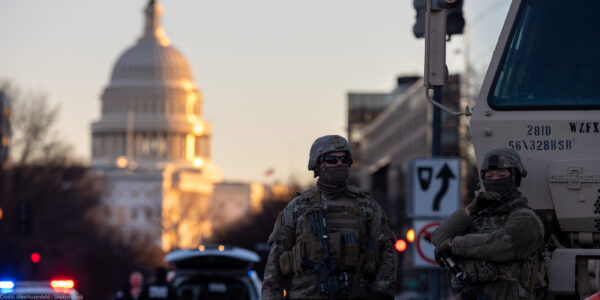
This was originally posted on .
Last year, after concluding that many passages in the document ŌĆ£no longer merited secrecy,ŌĆØ the Second Circuit published a redacted version of the Justice DepartmentŌĆÖs July 2010 Office of Legal Council memo that approved the ŌĆ£targeted killingŌĆØ of Anwar al-Aulaqi. The courtŌĆÖs view was that government officials had already disclosed much of the information they were trying to withhold. In speeches, media interviews, and congressional testimony, officials had acknowledged the governmentŌĆÖs role in the strike that killed al-Aulaqi, explained the purported legal basis for the strike, and invoked still-secret OLC memos to reassure the public that the strike was lawful. Having done all of this, the court said, the government couldnŌĆÖt plausibly claim that the entirety of the July 2010 memo was still secret, and it couldnŌĆÖt lawfully withhold the entirety of the memo under the Freedom of Information Act.
From , the Second CircuitŌĆÖs ruling was a victory for transparency. Human rights groups and media organizations had been calling for the release of the legal memos underlying the targeted-killing program; thanks to the Second CircuitŌĆÖs ruling, one of those memos ŌĆö arguably the most important one ŌĆö was made public. From another perspective, the courtŌĆÖs ruling wasnŌĆÖt very significant at all. The ruling didnŌĆÖt expose secrets. By its own terms, it exposed facts and legal analysis that had already been disclosed.
Whatever perspective one adopted, though, one thing seemed undeniable: The publication of the memo constituted an official disclosure of the governmentŌĆÖs legal analysis.
But one should never underestimate the governmentŌĆÖs willingness to deny the undeniable ŌĆö a lesson I probably should have learned by now. Last week, the government filed a brief asking the Second Circuit to allow it to withhold other OLC memos relating to the targeted-killing program. In a footnote, the government provides this take on the courtŌĆÖs publication of the July 2010 OLC memo (which the government calls the ŌĆ£OLC-DOD MemorandumŌĆØ):

The first two sentences of this footnote are a belated attempt to preserve the governmentŌĆÖs ability to challenge the courtŌĆÖs conclusion that portions of the July 2010 memo had been officially acknowledged. I say ŌĆ£belatedŌĆØ both because the government didnŌĆÖt petition for certiorari when it could have and because the memo has already been published.
But itŌĆÖs the last sentence of the footnote that is truly remarkable ŌĆö unreal, one might even say. Sure, the government says, the Second Circuit published the July 2010 memo, and sure, it published the memo after having concluded that the government had officially acknowledged the memoŌĆÖs contents, and after the government declined to file a petition for certiorari to the Supreme Court. But so what?, the government says. We donŌĆÖt consider the Second CircuitŌĆÖs publication of the memo to have been an official disclosure. As far as weŌĆÖre concerned, the government says, the memo is still secret.
IŌĆÖve written about the implications of this kind of official secrecy. IŌĆÖm not sure what else to say about it, except that the governmentŌĆÖs footnote calls to mind Karl RoveŌĆÖs infamous remark to Ron Suskind about the construction of ŌĆ£realityŌĆØ:
WeŌĆÖre an empire now, and when we act, we create our own reality. And while youŌĆÖre studying that realityŌĆöjudiciously, as you willŌĆöweŌĆÖll act again, creating other new realities, which you can study too, and thatŌĆÖs how things will sort out.
RoveŌĆÖs targets at the time were journalists and doves ŌĆö members of what he called ŌĆ£the reality-based communityŌĆØ ŌĆö but RoveŌĆÖs use of the word ŌĆ£judiciouslyŌĆØ perhaps suggests that his statement has broader application. In the empire, he seems to be saying, the executive creates reality. The rest of us ŌĆö judges included ŌĆö can only study it.

